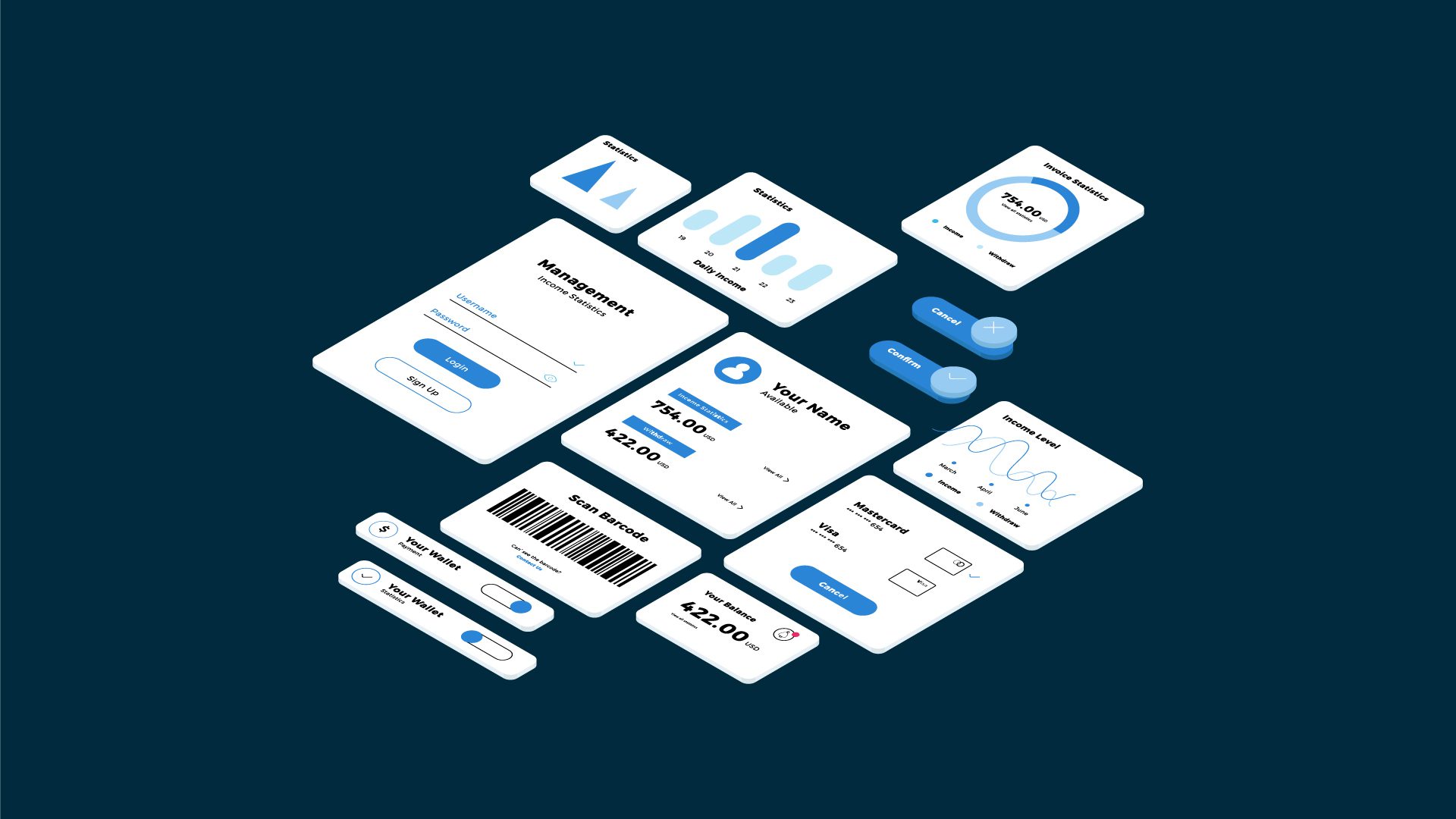This raises the question of how large tech businesses continuously deliver functional, high-quality software. These businesses all use a tried-and-true software product development methodology that raises the possibility of producing goods that are well-received by consumers.
What is Product Development for Software?
Software product development is designing, creating, and implementing functional software for end users. It’s crucial to remember that software only sometimes equates to programming or coding. Anything that uses an operating system (OS) and a collection of codes or programs to solve a problem is considered software.
This method can also be defined as adding modifications to an already-existing product rather than developing a new one. Businesses might need to repeat the procedure whenever they introduce new features to ensure that everything works properly with their present OS or product.
While project managers may employ several software development methodologies, such as Agile or Waterfall, the procedure frequently involves some overlapping processes.
Non-technical tasks like these are also included in the creation of software products.
- Market analysis,
- Planning and strategy for products,
- Marketing,
- Customer support.
4 Types of Software Product Development Based on Your Business’s Needs
- Products for System Software
Programs for managing computer resources or systems software make application programming easier. They comprise software utilities, translators, database management, networking, and operating systems.
- Software Product Programming
Compilers, text editors, debuggers, linkers, and other development tools are examples of programming software. These programs, or sets of programs, assist software developers in creating, debugging, and maintaining other programs and applications.
- Products for Application Software
Application software is an application or product that can be utilized to carry out tasks. Media players, Office productivity suites, data management software, and other applications are well-known examples of application software.
- Products for Embedded Software
Products for embedded system software are used to operate machinery and equipment via automobiles, industrial robots, telecommunications networks, and other platforms.
Why is it important to develop software products?
Likely, software systems or activities that were initially compatible may no longer work together as a firm grows. Thus, software product development is essential to an organization’s ability to meet growth and demand.
Moreover, software product development offers the following advantages:
- Enhances Your Business Operations
Each company has its own internal protocols and business model. No matter how strong or efficient the software is, modifying these processes to fit a particular application or product is only sometimes straightforward. Therefore, software product development should align with your model and special internal processes and procedures.
- Provides a Unique Solution
What may be effective for one business may not be for another. For this reason, creating a software solution specifically tailored to your company guarantees that it handles unique processes and tasks that meet your requirements.
- Provides an Advantage Over Competitors
However, how? The creation of software products boosts productivity and addresses many of your business’s issues. Utilizing a solution like this gives you a distinct advantage over competitors because you are the only company in the industry. What occurs if your rivals use the same software product? That lets you plan for technical advancements and catch up with them.
- Custom Software Is Extremely Flexible
Business procedures are always evolving and always need to be more steady. Adopting new technology and methods is crucial to maintaining your marketing leadership. You can keep up with any changes in marketing trends by integrating new technologies and processes with your current software through software product development.
7 Important Steps in the Process Plan for Software Product Development
The software product development process is a fundamental instrument for encouraging a large number of individuals to collaborate on a project. Ultimately, using one produces fewer problems, faster delivery times, and better value.
The following seven steps make up the software product development process:
- Conceptualization and organizing
An amazing idea is where it all begins! However, to be implemented, that proposal must be thoroughly considered. The first and most important phase in developing a software product is careful planning, which involves determining the project’s scope, outlining how the new software system will satisfy business model objectives, addressing cost-related concerns, securing resources, and creating a timeframe.
- Requirements and Feasibility Analysis
During this stage of software product development, the project is defined in a detailed analysis of how the project’s feasibility is carried out. A catchy design and clean code are not enough to build an actionable solution; you first need the developers to get an in-depth understanding of the project objective and requirements.
Requirements and feasibility analyses showcase all the technical and economic aspects affecting software development. They help identify risks at the beginning and devise risk mitigation strategies.
- Design
One important part of the development process is designing the software product. The software system is conceptualized and constructed during the design phase as an organized software architecture that satisfies project objectives. Developers who create custom software products establish clear procedures and guidelines. The final prototype and mockups utilized for the subsequent phases of the software product development process are used to build the entire software structure. When the design has been determined, it’s time to proceed with the actual development.
- Coding and development
The development stage of the software product development process is all about writing code and converting design documentation into working software. Since it forms the foundation of the entire process, this stage of development takes the longest. The software developers ensure that their code complies with stakeholder requirements, software requirements specifications, etc.
- Testing and integration
After the program has been written and finished, system testing and integration commence. Along with user acceptability testing, the Quality Assurance (OA) team performs several tests, such as interoperability, functionality, and systems integration testing. This ensures that the solution’s business objectives are satisfied and the code is clear.
- Put into action and distribution.
This stage includes the installation of the built software system. The implementation strategy serves as the foundation for this methodical process. The recently constructed and tested software system has been transferred to production to implement specific adjustments.
- Maintenance and operations
Regular software product upgrades and maintenance are part of the last stage of the software product development lifecycle. This step is given the utmost care since it involves polishing, improving, upgrading, and fine-tuning the product in response to comments from the actual world regarding how it performed throughout this stage.
4 Types of Software Product Development Methodologies
Various enterprise software development approaches are available today, each with benefits ranging from reduced risk to increased scalability, continuous iterations, and process efficiency. Look at the four most widely used approaches for developing software products: waterfall, agile, scrum, incremental, and iterative. See which one best suits your company’s demands.
- Falling Water
One of the original approaches to developing software products, the waterfall model, incorporates some steps that must be followed in order from creation to upkeep. This paradigm works well for projects where the requirements are precise papers outlining the method by which the system will be developed since it guarantees the achievement of well-defined goals.
- Quick
Every few weeks, new software product releases and updates are generated using agile processes and made available to clients. After receiving user input, additional features can be tested, implemented, and retested for each product iteration. The agile technique ensures that the final product satisfies the specified objectives while saving time.
- Scrum
Scrum is a macro-level software product development process management technique subset of Agile techniques. It adheres to Agile’s values and tenets while covering further definitions and specifications by considering a few significant software product development processes. Software products with fluctuating requirements are best suited for this methodology.
- Iterative and incremental
The incremental and iterative software product development approaches provide a middle ground between the flexibility of the Agile process and the upfront planning of the Waterfall method. They are similar in that both involve developing software components and releasing them to users for input, but they differ in what is produced with each release.
Difficulties in developing software products
The hardest part of the software product development process is creating a consumable. This suggests a plethora of additional major obstacles that could jeopardize your project from the outset.
Absent a distinct vision
A poorly defined vision of the final product is a common mistake made by both new and seasoned companies. To produce a value-packed solution, a team must be aware of the product’s goals and the issues it is meant to address. A product development plan should make this long-term goal clear and be backed up with precise deliveries and estimations.
Inadequate record-keeping
Poorly written software documentation can become a costly problem in the future. Documentation gaps immediately lead to the absence of a uniform procedure for every step, which causes budget overruns, missed deadlines, and useless features. Switching software vendors is much more difficult when there is a document mismatch.
Inappropriate method of operation
Despite being promoted as the de facto norm for project management, agile cannot be effectively implemented by adhering to universally applicable rules. Teams can become frustrated when textbook Agile planning goes wrong. However, the secret to adopting Agile effectively is to grasp its fundamental ideas and modify any Agile-based framework to suit the demands of your particular project.
Lack of flexibility in the product
Innovative and new goods typically have changing needs. Furthermore, you will only be able to change the functionality or add new features if the system architecture is flexible and monolithic. This also holds for your project management strategies; if they’re inflexible, they won’t enable you to adapt safely and efficiently to shifting project assumptions.
Inadequate setting of priorities
Software project scheduling, budget control, and planning depend on prioritizing requirements. As a result, the development team’s duties should be explicitly listed in the project backlog according to priority. If not, your development expenses will rise, and resources will be squandered.
Neglecting to guarantee mental security
The foundation of the agile methodology is not Kanban or Scrum but rather a robust dialogic process for your development team. Innovation and teamwork are not fueled by intellectual friction unless it is positively cultivated. Otherwise, everyone on the team will be too scared to voice their concerns and offer fresh approaches to the issue.
Shortage of talent
Because 1 in 5 firms need help to acquire tech talent, a lack of skills might seriously hinder the progress of your project. This issue is common for specialized skills and even more problematic in local markets where fierce competition is fierce. As a result, you can spend much time looking for unicorn employees.
Having trouble striking a good balance
Project failures can also result from insufficient efforts to achieve an appropriate quality-cost ratio. Teams may thus find it difficult to devote the proper number of resources to preventing product flaws or, on the other hand, to spending excessive resources refining their product. Finding a balance between the price of quality and a usable product is crucial in this situation.
Conclusion
Making items that impact and attract people requires much work. When it comes to success, having a well-organized software product development process is half the fight. Managed by a committed development team, an agile-first, customer-centered, and client-oriented workflow gives you more control, increases project predictability, and conserves resources.







12 Best Software Development Tools In 2024 - Microdeft
[…] are just a few examples of the diverse variety of tools in this category. They support the software development lifecycle and include features designed to facilitate effective project management and […]